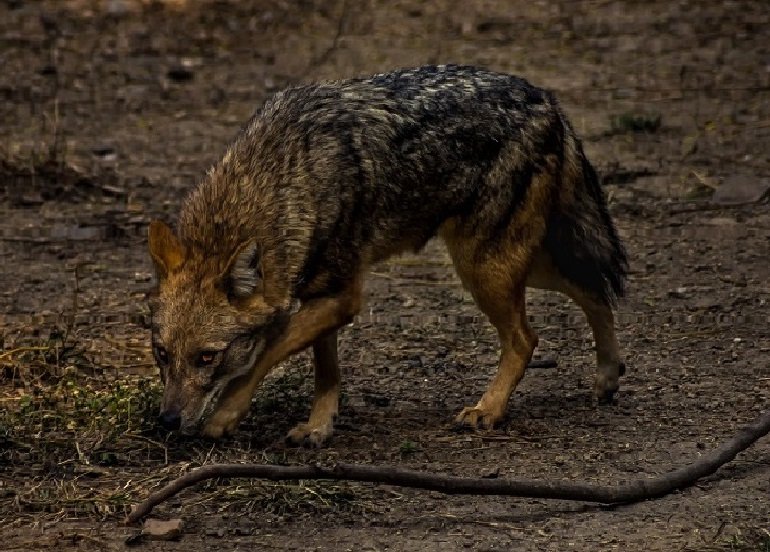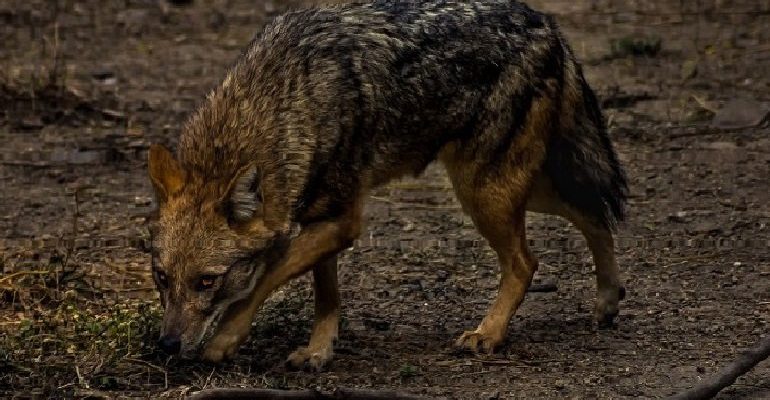
Jackals are often spotted in the open savannas, deserts, and even urban areas of Africa and parts of Asia. They’re not just surviving; they’re actually pretty successful at it! But how do they manage to find their way in these sometimes harsh and unpredictable landscapes? Let’s dive into their life, habits, and the tricks they use to get by.
Unique Characteristics That Aid Survival
Jackals possess several physical and behavioral traits that help them adapt to tough environments. First up, their size is a big advantage. They are medium-sized animals, which allows them to hunt and scavenge effectively without expending too much energy. Unlike larger predators, they can fit into tighter spaces while hunting for food. This is especially handy in areas with dense vegetation or rocky outcrops.
Another characteristic is their sharp sense of hearing. Jackals can detect the softest sounds from miles away, whether it’s the rustling of prey or the distant growl of a competitor. This keen sense allows them to locate food sources and avoid dangers. Imagine being able to hear whispers from far off—it’s a skill that certainly sets them apart in the wild!
Lastly, jackals have a coat that helps them blend in with their environment. Their fur is often a mix of brown, black, and gold, which acts like camouflage in the grasslands or arid regions. This is crucial not just for hunting but also for evading larger predators. It’s like wearing a stylish outfit that also doubles as protective gear!
Social Structure and Teamwork
One of the most interesting aspects of jackal life is their social structure. Jackals are typically found in family groups, which enhance their survival probability. These groups often consist of a breeding pair and their offspring, working together towards a common goal. This teamwork is vital, especially when it comes to hunting or raising young.
When hunting, jackals often employ cooperative strategies. They might take turns chasing prey or distract it while others flank from different directions. For instance, if a jackal spots a hare, it may chase it toward another member of the pack waiting in ambush. This collective effort increases their odds of a successful catch. It’s a bit like playing a game of tag, where everyone has a role to play!
Additionally, their social bonds extend beyond just hunting. They engage in playful behaviors and vocalizations, strengthening their connections within the pack. These interactions help in maintaining their social structure, ensuring everyone is on the same page for survival.
Feeding Habits: Scavenging and Hunting
Jackals are opportunistic feeders, which means they’ll eat just about anything they can get their paws on. While they do hunt small animals like rodents and birds, they’re also known for scavenging carcasses left behind by larger predators. This ability to adapt their diet is crucial, especially in harsh environments where food scarcity can strike at any moment.
When scavenging, jackals have a few tricks up their sleeves. They often follow lions or hyenas to capitalize on their kills. It’s not just a lucky coincidence; they’ve got the patience to wait for leftovers. They can also eat fruits and insects, which adds variety to their diet. You might say that jackals are nature’s recyclers, always ready to turn up on a buffet line!
Their adaptability doesn’t stop at their diet. Jackals are skilled hunters when needed. They can hunt solo or in pairs, depending on the situation. This flexibility allows them to thrive in various environments, even when food options change dramatically.
Habitat Adaptations
Jackals are remarkably versatile in their choice of habitats. They can be found in dry grasslands, forests, and even mountainous regions. But what really makes them stand out is their ability to adapt their behavior based on where they are.
For instance, in more arid environments, jackals become more nocturnal. This means they do most of their hunting and foraging at night when it’s cooler. Just like night owls getting their groove on, jackals take advantage of the cooler temperatures and reduced competition to thrive. You might even hear their howls echoing through the stillness of the night, a sound that’s become a signature of their survival strategy.
Conversely, in areas where food is abundant, jackals might be active during the day. This ability to switch between day and night activities based on environmental conditions shows just how adaptable they really are. It’s like being able to adjust your schedule for a better chance at success!
Dealing with Competition
Living in the wild isn’t always easy, and jackals face competition from larger predators. To deal with this, they’ve developed some clever methods. Territorial behavior is one of their main strategies. Jackals will mark their territory with scents and vocalizations to warn others to stay away. It’s almost like putting up a “No Trespassing” sign without the need for a physical barrier.
When confronted directly by larger predators, jackals often rely on their speed and agility. They can dart quickly in and out of bushes, making it hard for bigger animals to catch them. Think of it like a quick game of dodgeball—if you can move fast and stay nimble, you can avoid getting hit!
Another tactic is their adaptivity to group dynamics. If they feel threatened, jackals may temporarily retreat and regroup. They understand when to stand their ground and when it’s best to slip away, ensuring their safety and survival.
The Role of Jackals in the Ecosystem
Jackals play a vital role in maintaining ecological balance. As scavengers, they help clean up dead animals, preventing the spread of disease and keeping environments healthier. You can think of them as nature’s cleanup crew, removing waste and recycling nutrients back into the ecosystem.
Furthermore, when jackals hunt, they help control the populations of smaller mammals and birds. This keeps the food chain balanced, which is crucial in any ecosystem. If one species were to overpopulate, it could lead to resource depletion, affecting all wildlife in the area. So, jackals, in their unique way, contribute to a thriving environment.
Interestingly, their presence can even influence the behavior of herbivores. When jackals are around, animals like antelope tend to stay vigilant and on the move, ensuring they’re not easy targets. It’s a delicate dance in nature, where every creature plays a part in the bigger picture.
Jackals embody the spirit of resilience in their harsh environments. Through unique adaptations, social structures, and clever survival strategies, they manage to thrive where many might falter. Whether it’s their adaptability to different habitats or their collaborative hunting techniques, these canines show us how life can flourish against the odds.
So, the next time you think about survival in the wild, remember the jackal. They may not have the same ferocity as larger predators, but their intelligence and flexibility allow them to succeed in some of the toughest climates on Earth. Just like us, they navigate challenges with a combination of instinct, teamwork, and a bit of cunning—a truly inspiring story of survival!

